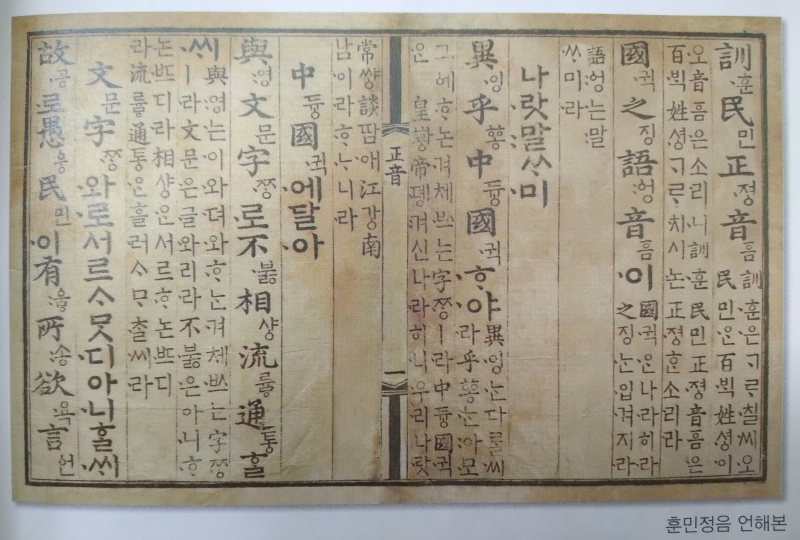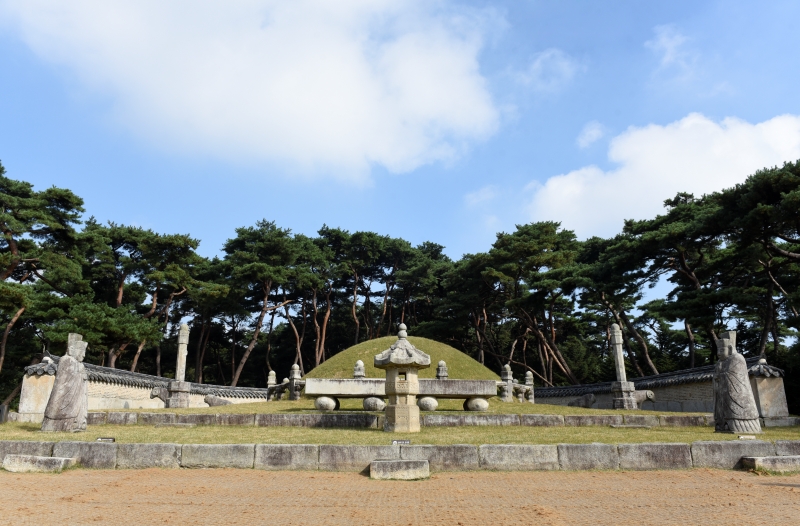- 한국어
- English
- 日本語
- 中文
- العربية
- Español
- Français
- Deutsch
- Pусский
- Tiếng Việt
- Indonesian
By Honorary Reporter Preeti Rawat from India
Photos = Preeti Rawat, Korea.net Flickr
The Korean language has recently soared in global popularity thanks in no small part to the boom in K-pop and Korean dramas.
The U.S. language-learning website Duolingo in December last year called Korean the world's second-fastest growing tongue behind Hindi. Last year, more than 160,000 people in 39 countries studied Korean. And in India this year, Korean was designated a foreign language elective at public schools.
To any learner of Korean, one name always stands out: King Sejong the Great. A visionary pioneer, he is credited with developing the Korean alphabet Hangeul along with making contributions to other fields such as education, law, science and technology, and literature.
Background
Sejong (1397–1450) was the fourth king of the Joseon Dynasty (1392–1910). Assuming the throne in 1418, he initially governed alongside his father Taejong and later as the sole ruler. He conducted reforms and contributed to several fields like science and technology and agriculture.
The skilled politician and military tactician funded inventors, revised the calendar to accurately predict eclipses, promoted traditional medicine, produced a handbook for farming techniques, and championed equality and justice.
Invention of Hangeul
Before Hangeul appeared, Koreans used traditional Chinese characters to read and write for centuries. The difficulty of Chinese script meant most laypeople were illiterate at the time, so Sejong decided to create an alphabet for the masses.

Hunminjeongeum (The Proper Sounds to Instruct the People) is a textbook that introduced Hangeul to the masses of the Joseon Dynasty. (Screen shot of page in King Sejong Institute's textbook)
Hangeul was not only a scientific alphabet but also easy to learn. Neo-Confucian scholar and government official Jeong In-ji, who served under Sejong, said, "A wise man can learn (Hangeul) in one morning…and a fool can learn it in the space of ten days."
Legacy
Sejong's contributions to Korea remain relevant even today and are acknowledged worldwide. King Sejong Institute has branches in many countries to teach Korean. The National Hangeul Museum in Seoul also provides a detailed account of the structure and evolution of the alphabet, and a statue of the king is prominently displayed in central Seoul.
Sejong and his wife, Queen Soheon, were buried in the mausoleum Yeongneung, which was designated a UNESCO World Heritage Site in 2009 as part of the Royal Tombs of the Joseon Dynasty.

The royal mausoleum Yeongneung, where King Sejong and Queen Soheon were buried, was designated a UNESCO World Heritage Site in 2009 as part of the Royal Tombs of the Joseon Dynasty. (Korea.net on Flickr)
In 1965, the Korean government moved Teachers' Day from May 26 to May 15, Sejong's birthday, to honor his teachings and contributions.
kalhong617@korea.kr
*This article is written by a Korea.net Honorary Reporter. Our group of Honorary Reporters are from all around the world, and they share with Korea.net their love and passion for all things Korean.